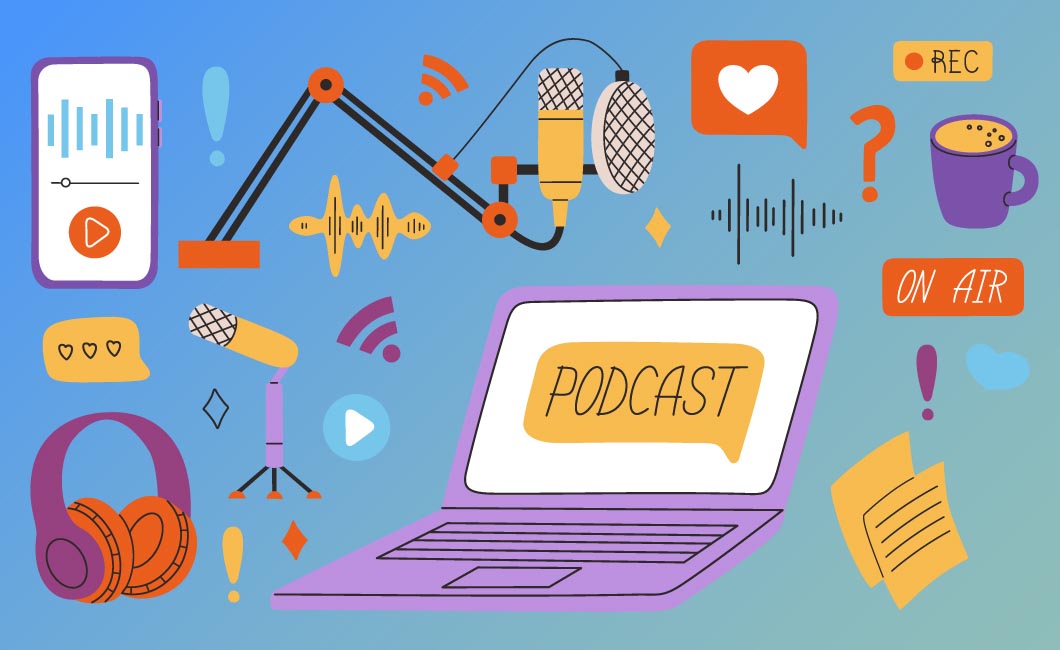RF|Binder welcomed Laura Mayer for our January Hour to Empower. Currently the Executive Producer of Podcast Programming at ABC News, Laura has served as Head of Development at Stitcher and as employee number one at Panoply. She has launched and produced a wide variety of podcasts, including Revisionist History with Malcolm Gladwell, Shameless Acquisition Target, and The Dream with Jane Marie.
RF|Binder hosts Hour to Empower sessions on a quarterly basis. We bring in a diverse array of speakers and thought leaders to spark meaningful conversations with our colleagues and drive impact for our clients.
Below is a summary of some key takeaways from our discussion with Laura.
A decade ago, 12% of Americans were regular podcast listeners. Today, that number has skyrocketed to 42%, with no signs of slowing. As demand has grown among people for low-commitment, high-volume entertainment that can be listened to on a commute or over dinner, news outlets, advocacy groups, celebrities, consumer and corporate brands have all stepped in to fill the void.
For many in the podcast space, the audio medium may supplement an existing offering to expand audiences: ABC News produces podcast companions to hit shows like The View, and retail brands like Trader Joe’s and Sephora have launched podcasts linked to their in-store offerings. Some brands even produce podcasts that are entirely unconnected to their products to shift perceptions: for instance, General Electric created a sci-fi thriller podcast that didn’t mention General Electric.
Podcasting is a business above all else, and as with any business, a podcast needs to be profitable. A show can be critically acclaimed or beloved by the network that releases it, but if it isn’t paying for itself in six months after its initial release, it could be on the chopping block. Breaking even in the crowded podcasting industry depends upon a few pillars, among them revenue sources, smart distribution, and engaging audio.
Revenue Sources in Podcasting
The profitability of podcasting revolves around advertising. When the hit podcast Revisionist History launched in 2016, the CPM (cost per mille, or cost per thousand listens) of advertisements was hovering at a sky-high $55. These days, in a more crowded market, a 30-second ad doesn’t command the price it once did. As a result, there is a renewed focus on the volume of podcast content, rather than its prestige. More episodes means more ad time, and dialing up the amount of content that’s produced is an important step in maintaining profitability as the value of ads continues to drop.
Paywalls present another revenue opportunity. According to Laura, the ethos of the ABC News department is to make all general-interest audio content available and ad-backed, without a paywall. There are instances, though, when putting content behind a paywall may be the right strategy. Shows that offer a deep-dive, nitty-gritty counterpart to more introductory content may best be situated behind a paywall. For example, a general-knowledge overview of the Elizabeth Holmes trial could be offered in front of a paywall, with a companion podcast that delves into the legal minutiae offered behind the paywall. Podcasts for young audiences may also do well behind a paywall, because of a basic human truth: parents will pay to keep their children happy and busy.
Distribution Strategy Built to Demographics
The distribution strategy for a podcast goes hand-in-hand with its content. Generally, according to studies from the Pew Research Center, there are two podcast genres with loyal demographics: millennial women flock to true crime podcasts, and younger male listeners gravitate to daily news shows and political content.
With these reliable audiences in mind, ABC News targets specific demographics for its new releases. Whenever ABC launches a new true crime audio show, it advertises the launch on its 20/20 podcast, one of the network’s most popular true crime programs. The goal is to find a ready audience by targeting true crime fans on the feeds they’re already listening to, effectively meeting the audience where they are.
Making the Audio Format Pop
None of the above really matters unless the podcast in question is engaging enough to attract a listenership. Audio content ought to answer the question, “Why is this a podcast, and not a news article or a book?” The most compelling podcasts don’t begin with paragraphs of exposition read out by a narrator; they start with excerpts of an interview, or an audio clip from a news broadcast, or ambient sound that evokes the scene.
Per Laura, the bread and butter of good audio content is action and interaction. This is as relevant for pitching as it is for listening. It is critical for PR professionals to tailor their stories to the medium they are pitching. Effective podcast pitches include the typical “who/what/when/where/why,” address how the story might lend itself to the audio format, and – if pitching a guest – may include an audio sample to demonstrate that the guest will perform well on mic. In such a competitive landscape, the stories that succeed are the ones that beg to be told out loud.
Laura’s insights into the value of content volume and the key demographics in audio storytelling offer a critical perspective for businesses, as opportunities for corporate and consumer brands in podcasting continue to grow.

